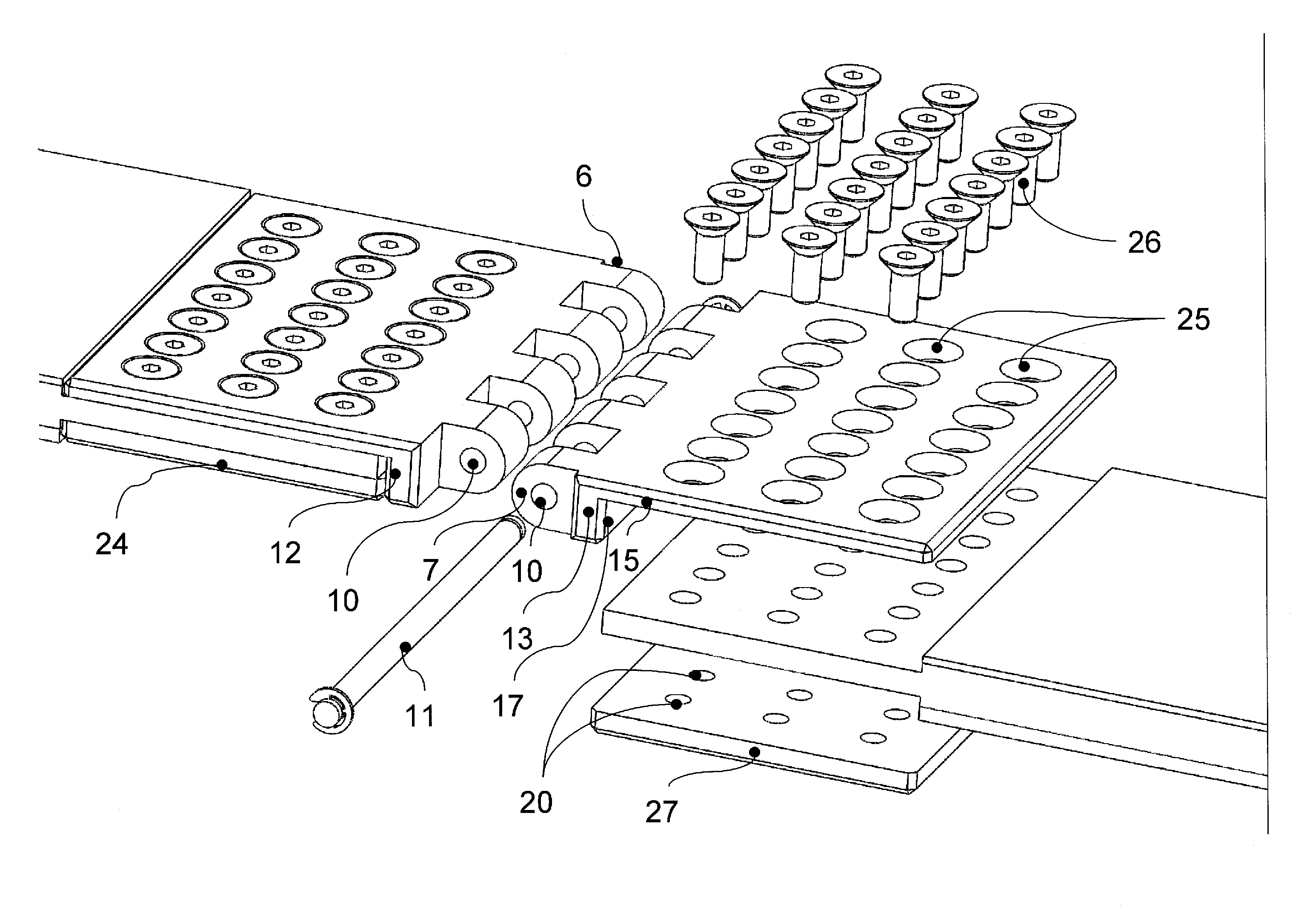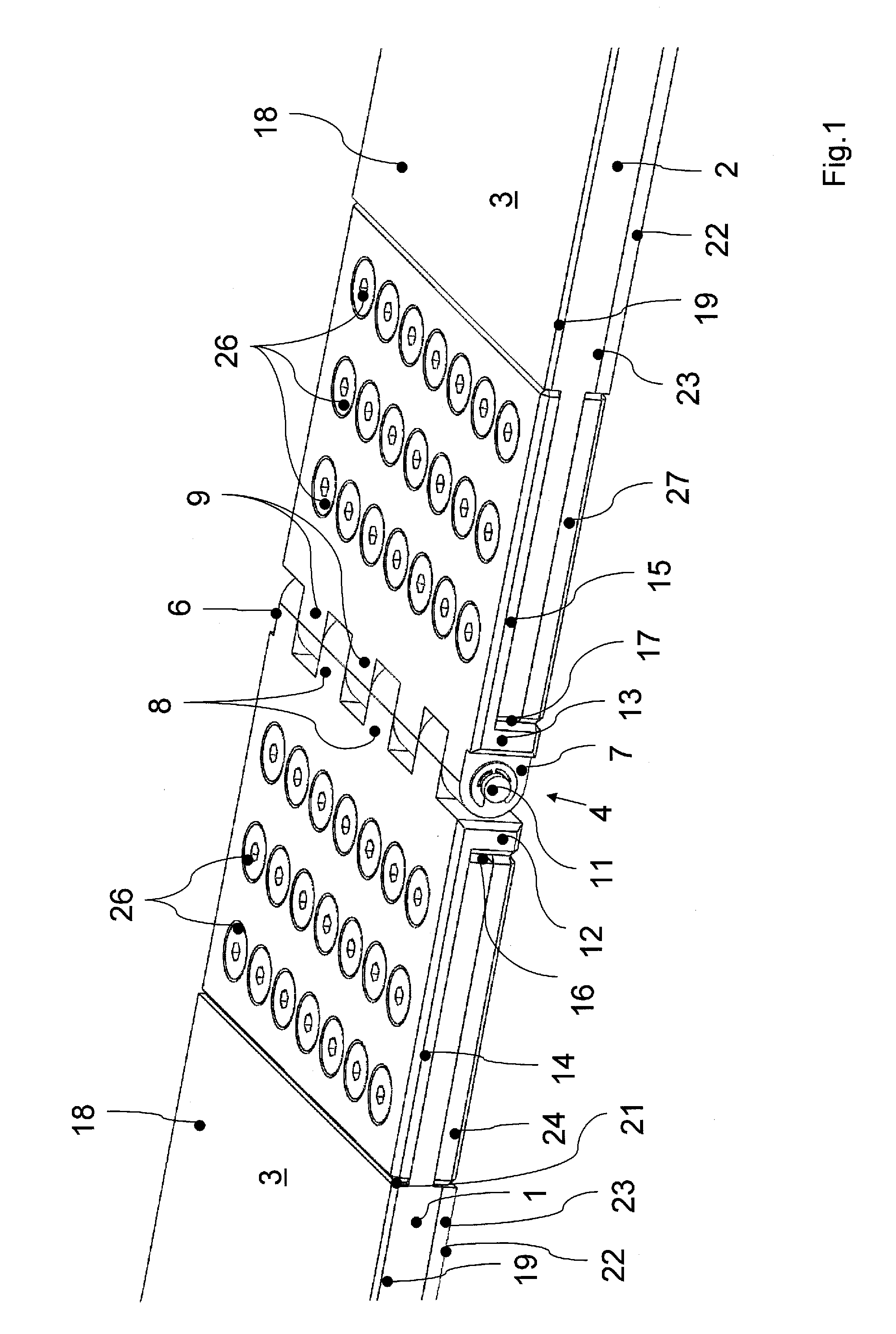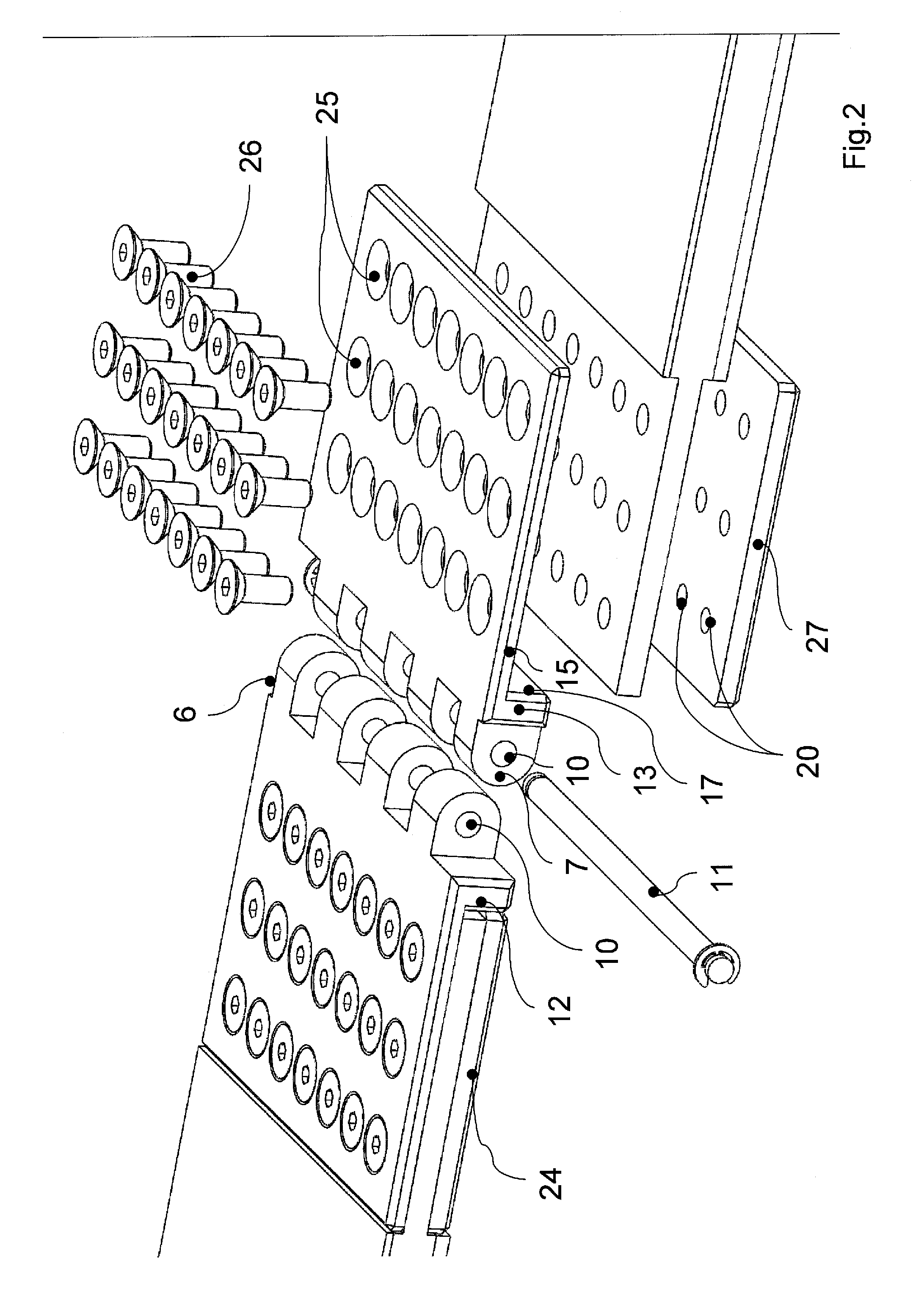Steel cord conveyer belt with a connecting hinge for coupling two belt ends
a conveyer belt and hinge technology, applied in the direction of belts, belt/chains/gearrings, belt fastenings, etc., can solve the problems of significant reduction of permissible tensile load, risk of steel wire breaking, and inability to accept hinge-like connections, etc., to achieve the effect of producing with little complexity
- Summary
- Abstract
- Description
- Claims
- Application Information
AI Technical Summary
Benefits of technology
Problems solved by technology
Method used
Image
Examples
Embodiment Construction
[0029]Two ends 1 and 2 of a steel cord conveyer belt 3 are connected to each other in a tension-resistant manner via a hinge 4 (FIG. 1). The steel cord conveyer belt 3 is constructed in a manner known per se from elastomeric material and has an embedded reinforcing support layer of steel cables or steel cords 5 arranged in parallel. To illustrate this embedding, the belt ends (1, 2) are illustrated in a transparent section in FIG. 3.
[0030]The hinge 4 is comprised of two part hinges 6 and 7 having crenellated projections 8 and 9 which intermesh in such a manner that the transverse bores 10 disposed in the projections 8 and 9 are aligned with each other to permit a coupling rod 11 to be introduced through the transverse bores 10 in order to complete the hinge 4. Each part hinge 6 or 7 comprises a hinge bar 12 or 13 carrying the crenellated projections (8, 9). The hinge bars (12, 13) have, facing away from the hinge, respective integrated clamping plates 14 and 15 which are integrally ...
PUM
 Login to View More
Login to View More Abstract
Description
Claims
Application Information
 Login to View More
Login to View More - R&D
- Intellectual Property
- Life Sciences
- Materials
- Tech Scout
- Unparalleled Data Quality
- Higher Quality Content
- 60% Fewer Hallucinations
Browse by: Latest US Patents, China's latest patents, Technical Efficacy Thesaurus, Application Domain, Technology Topic, Popular Technical Reports.
© 2025 PatSnap. All rights reserved.Legal|Privacy policy|Modern Slavery Act Transparency Statement|Sitemap|About US| Contact US: help@patsnap.com



